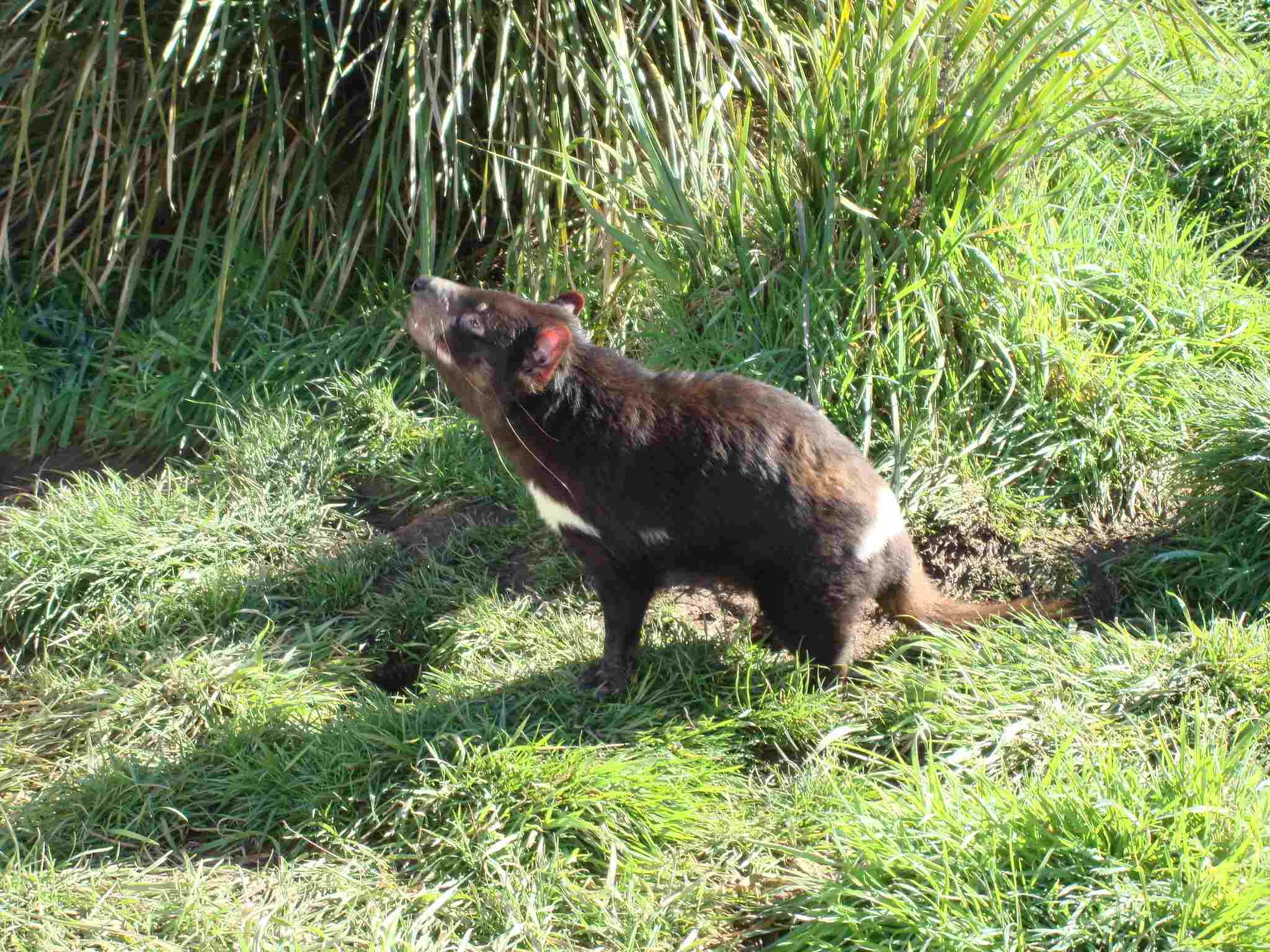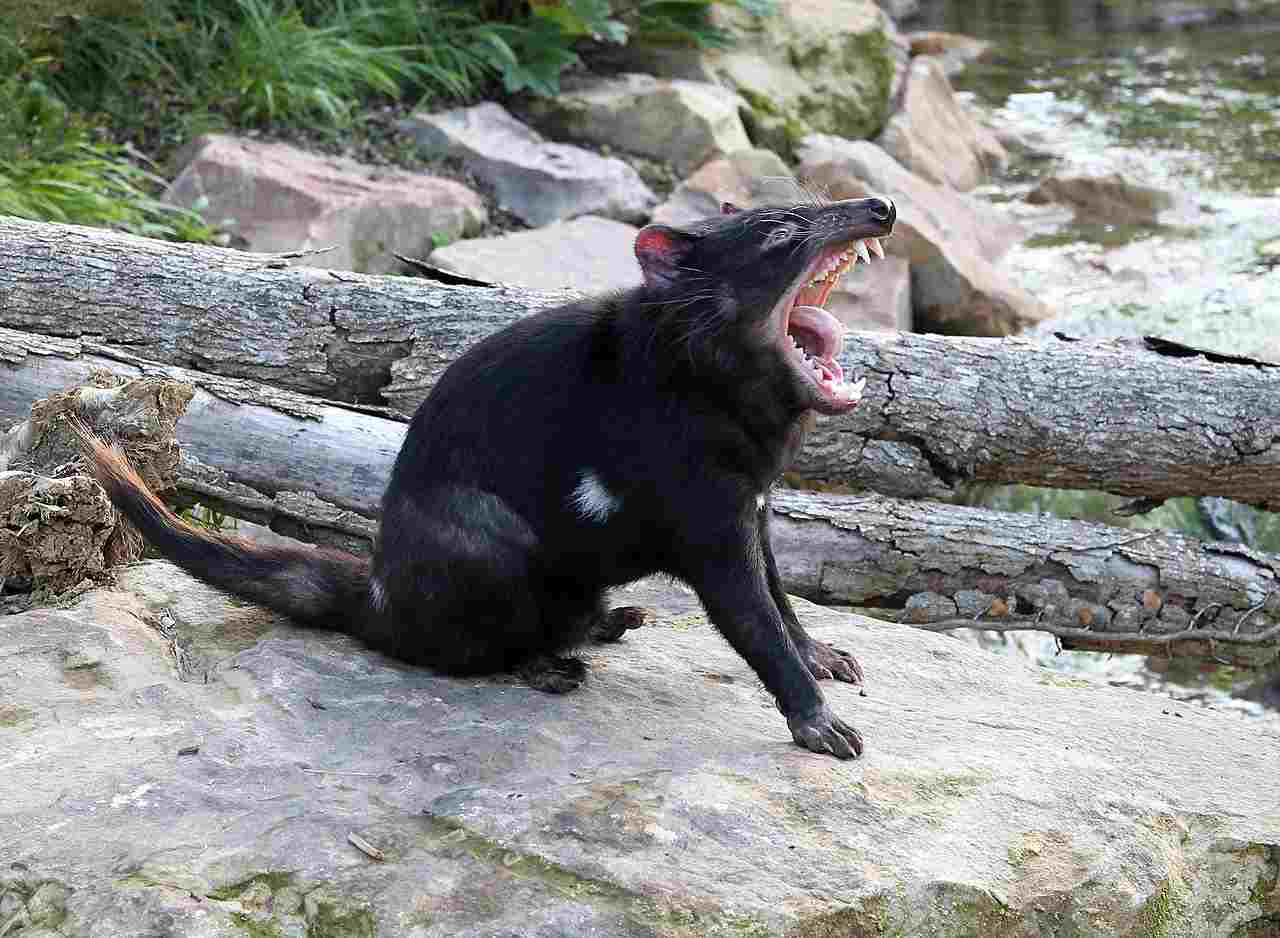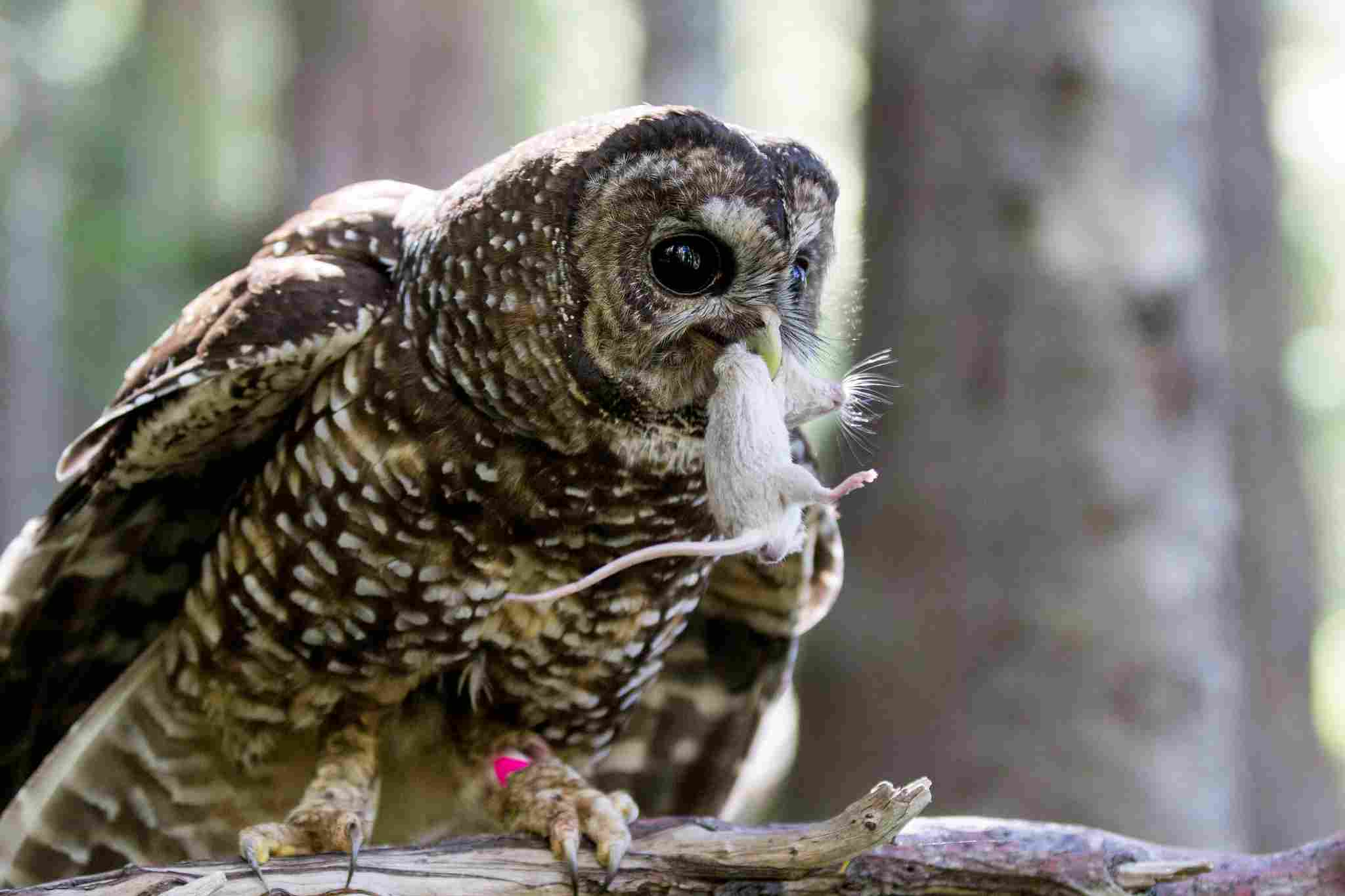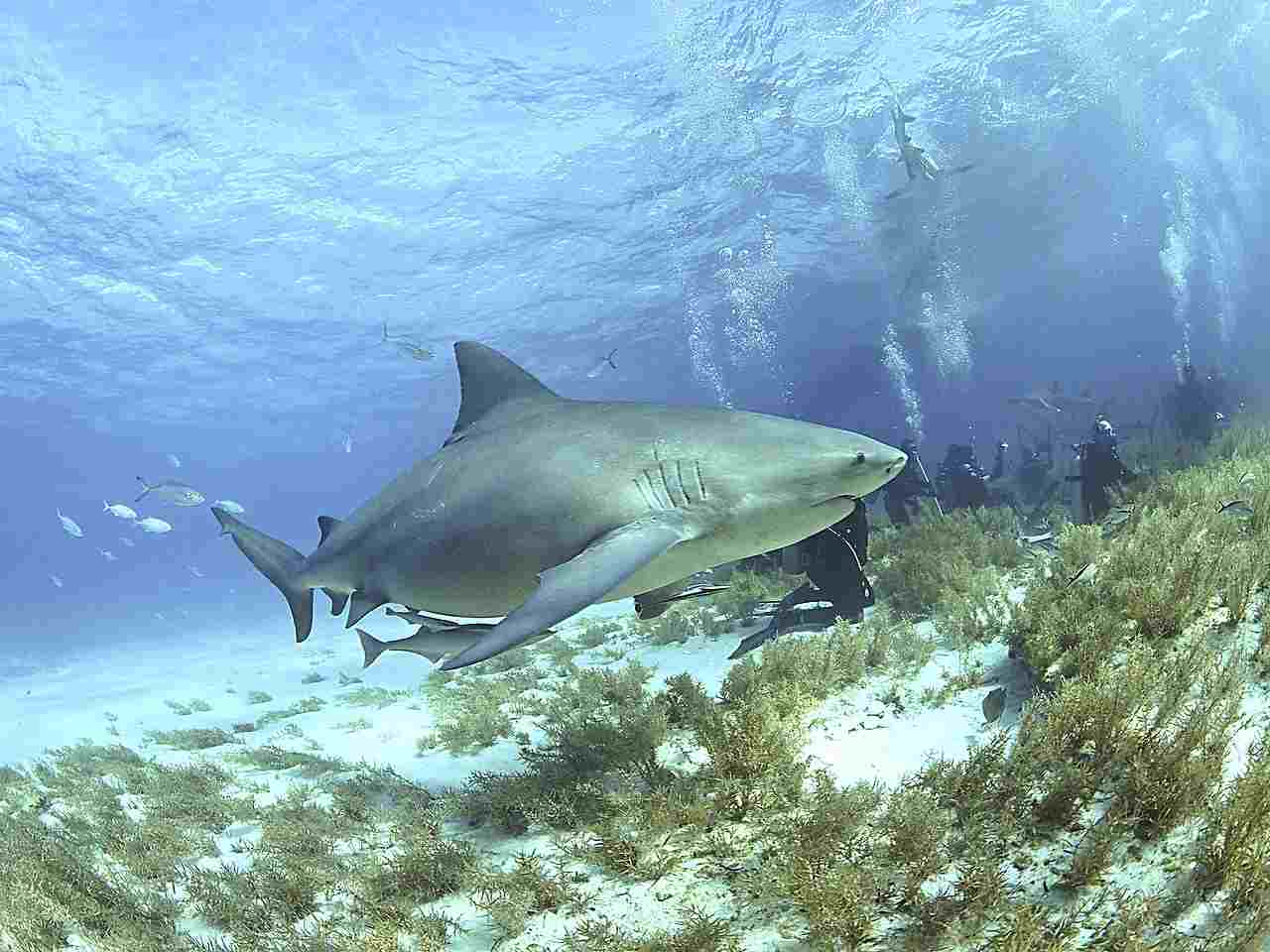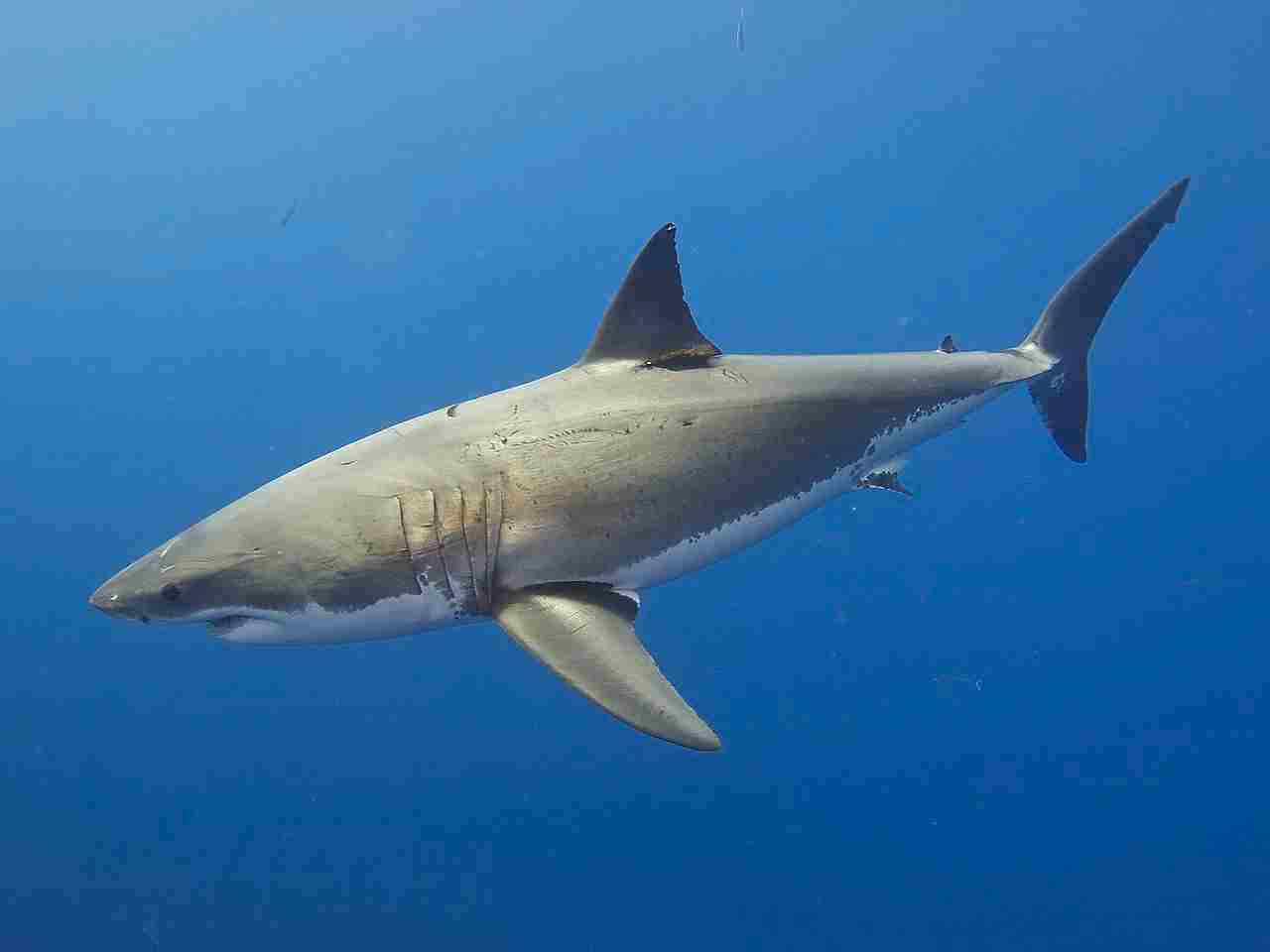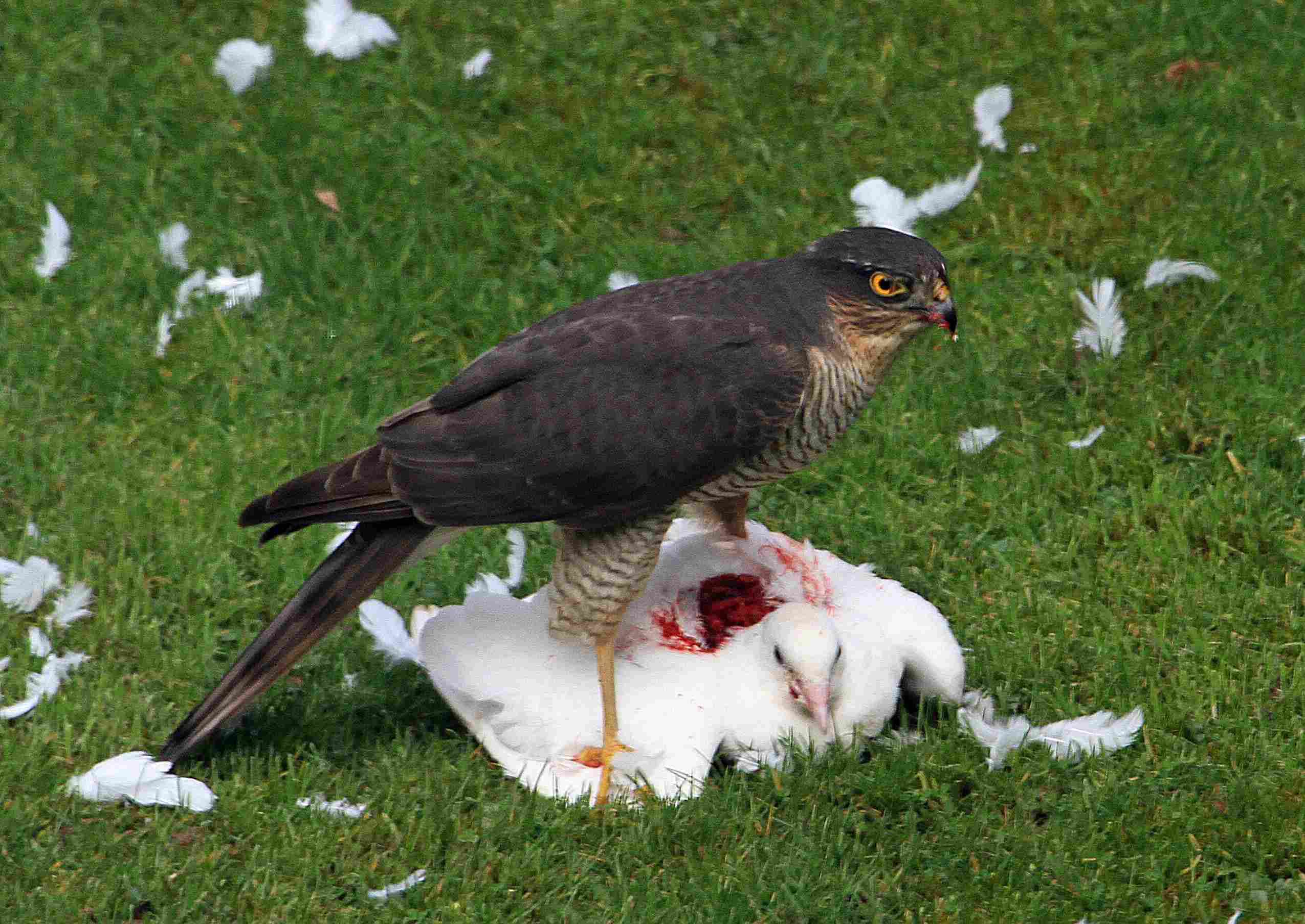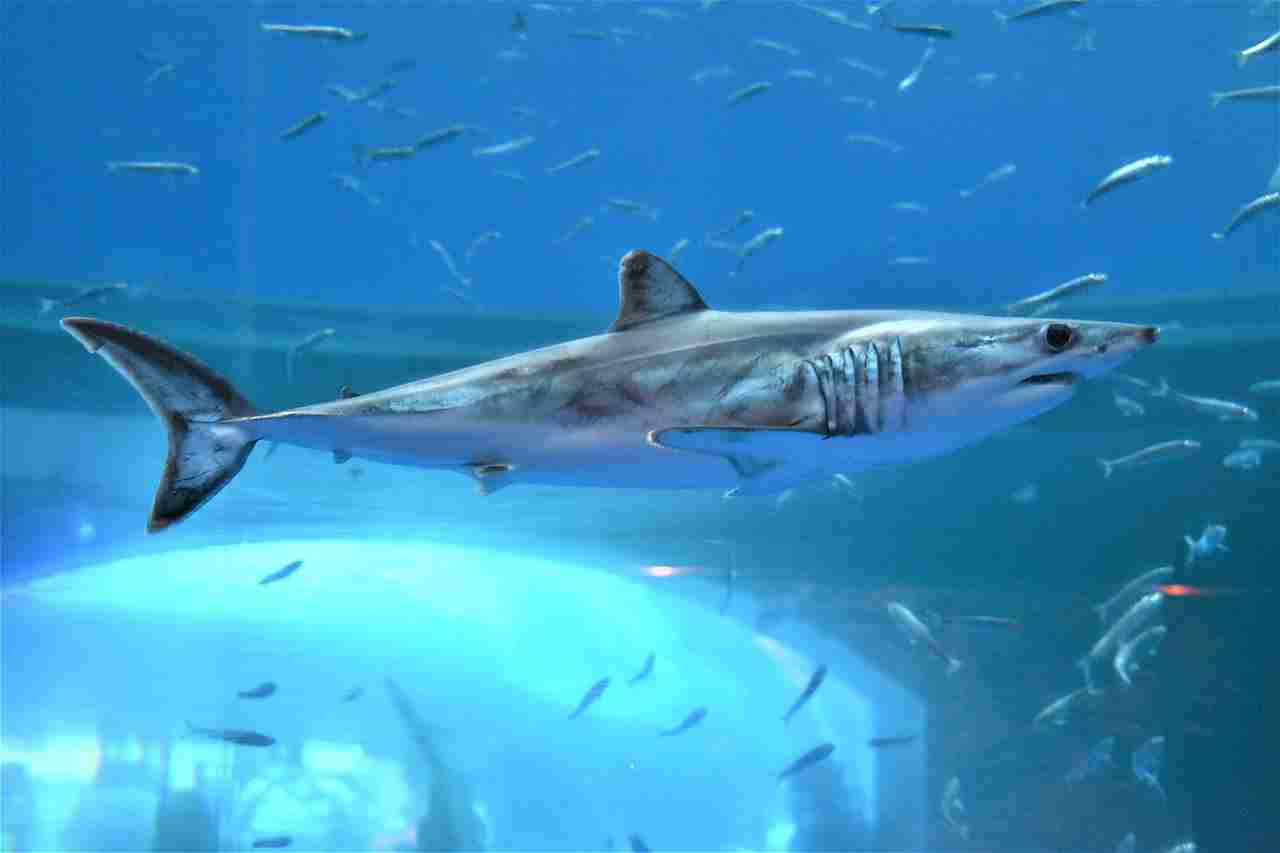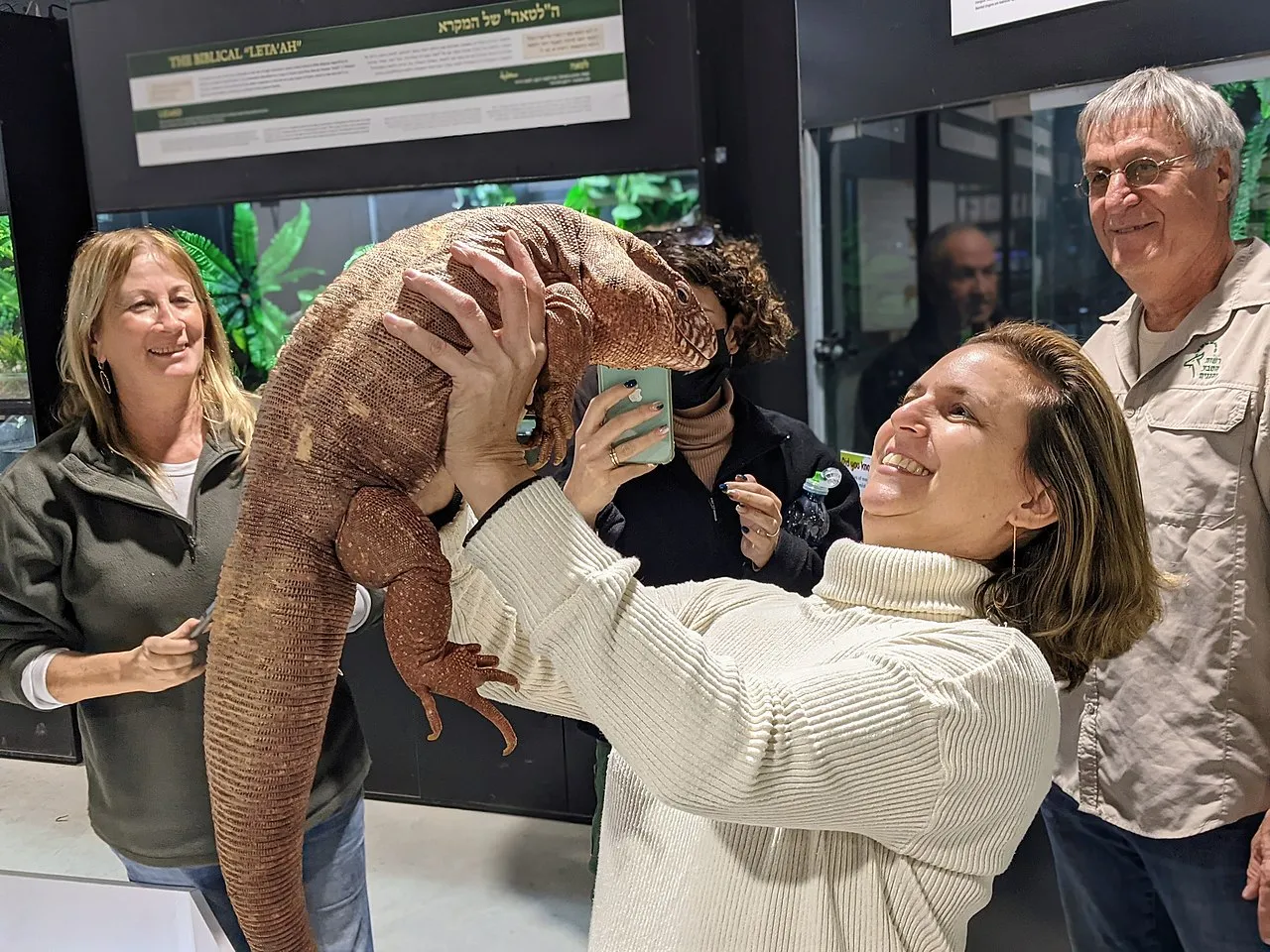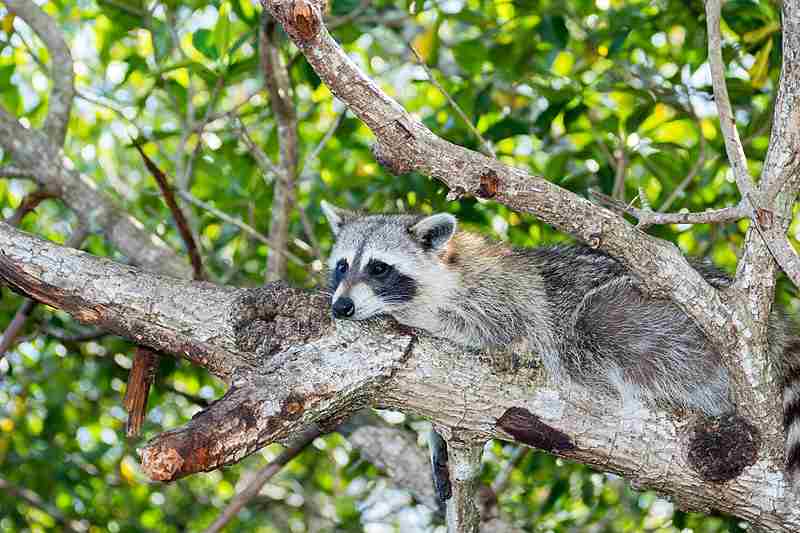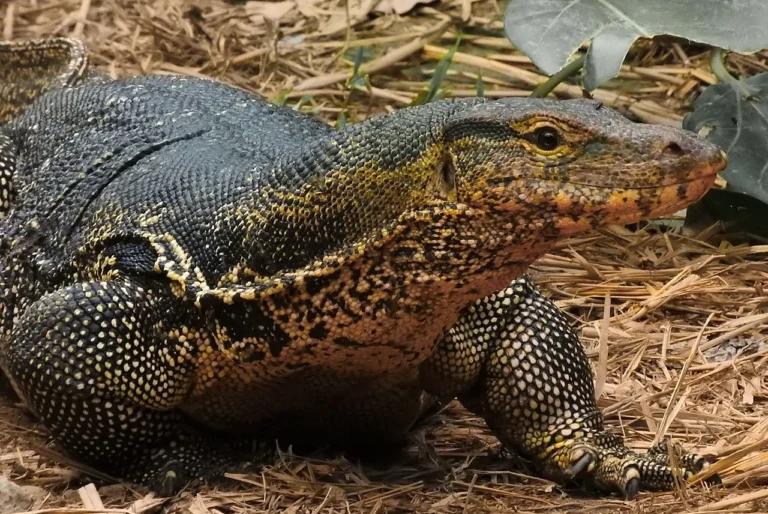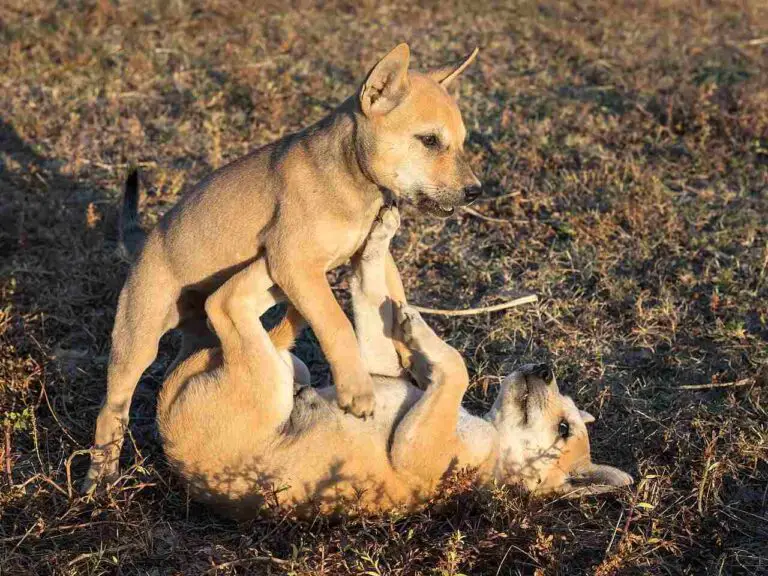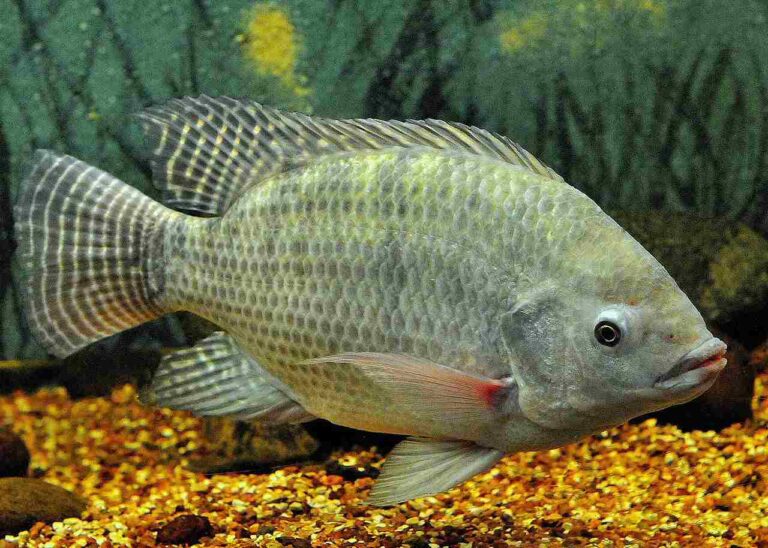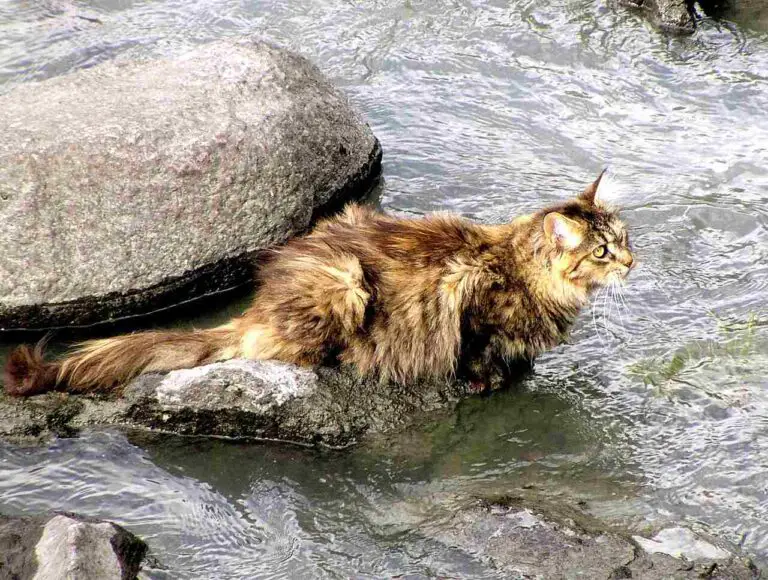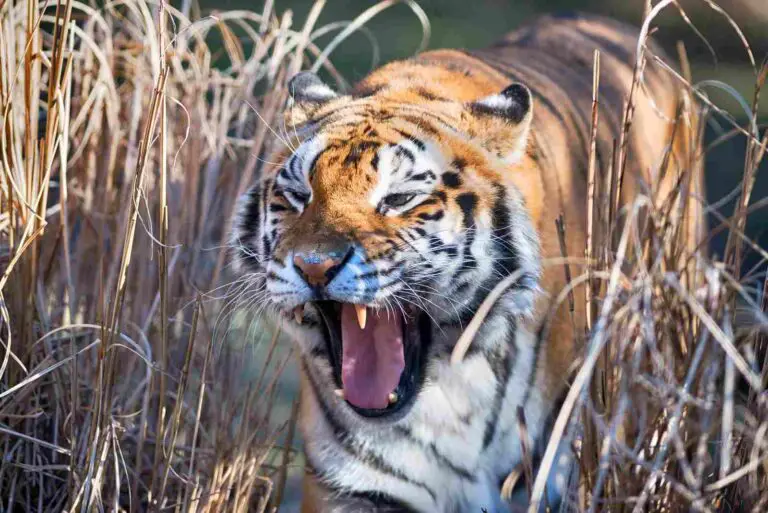11+ Carnivores in Australia and Their Characteristics
Carnivores in Australia are diverse and essential components of the ecosystem, playing critical roles as both predators and scavengers. They face various threats, including habitat loss, pollution, climate change, and human-wildlife conflicts. Conservation efforts focus on protecting their habitats, mitigating threats, and raising awareness about their importance. The carnivores in Australia include Tasmanian Devils, hawks, owls, geckos, Lace Monitors, frogs, Taipans, Eastern Brown Snakes, Mainland Tiger Snakes, tuna, sharks, swordfish, and marlin.
1. Tasmanian Devil
The Tasmanian Devil, scientifically known as Sarcophilus harrisii, is an iconic carnivorous marsupial native to the island state of Tasmania, Australia. Despite its somewhat intimidating name, these creatures are not as fearsome as their reputation suggests. They are stocky, muscular animals with a robust build, characterized by their black fur, powerful jaws, and strong bite.
Tasmanian Devils are primarily scavengers, feeding on carrion, but they are also skilled hunters, preying on small mammals, birds, reptiles, and insects. Their nocturnal nature and keen sense of smell aid them in locating food in the dense forests and scrublands they inhabit. Despite their solitary habits, they may gather at carrion sites, where they communicate with each other through a range of vocalizations, including spine-chilling screeches and growls.
Unfortunately, Tasmanian Devils face numerous threats in the wild, including habitat loss, road accidents, and the deadly Devil Facial Tumor Disease (DFTD), which has decimated their populations in recent years. Conservation efforts, including captive breeding programs and research into disease management, are underway to safeguard the survival of this unique and charismatic species.
2. Hawk
Hawks are majestic birds of prey found throughout Australia, known for their keen eyesight, soaring flight, and sharp talons. They belong to the family Accipitridae and are renowned for their hunting prowess, preying on a variety of small mammals, birds, reptiles, and insects. With their powerful wings and aerial agility, hawks can hunt both in open spaces and densely wooded areas, making them versatile predators across diverse habitats.
In Australia, various species of hawks inhabit different regions, including the widespread Australian Kestrel, the iconic Wedge-tailed Eagle, and the agile Brown Goshawk. These birds play essential roles in maintaining ecological balance by controlling populations of prey species and contributing to nutrient cycling through scavenging.
Habitat loss, habitat fragmentation, and persecution pose significant threats to hawk populations in Australia. Conservation efforts focus on protecting their habitats, reducing human-wildlife conflicts, and raising awareness about the importance of these apex predators in maintaining healthy ecosystems.
3. Owl
Owls are nocturnal birds of prey known for their silent flight, keen hearing, and exceptional night vision. Several species of owls inhabit Australia, ranging from the tiny Elf Owl to the powerful Powerful Owl. These birds are characterized by their large forward-facing eyes, sharp talons, and distinctive hooting calls.
In Australia, owls play crucial roles in controlling rodent populations, making them valuable allies to farmers and land managers. They hunt a variety of prey, including mice, rats, insects, and small birds, using their acute senses to locate and capture their quarry in the darkness of the night.
Like many other birds of prey, owls face threats from habitat loss, urbanization, and collision with vehicles and structures. Conservation efforts aim to protect their habitats, mitigate human-wildlife conflicts, and raise awareness about the importance of these enigmatic birds in maintaining healthy ecosystems.
4. Gecko
Geckos are a diverse group of lizards found throughout Australia, characterized by their adhesive toe pads, which enable them to climb vertical surfaces with ease. These nocturnal reptiles come in a variety of sizes, shapes, and colors, ranging from the tiny House Gecko to the formidable Eastern Spiny-tailed Gecko.
Geckos are primarily insectivorous, feeding on a wide range of insects and other invertebrates. Some larger species may also consume small vertebrates, such as spiders, small lizards, and even baby birds. Their ability to thrive in urban, suburban, and natural environments makes them successful predators across diverse habitats.
Despite their adaptability, geckos face threats from habitat loss, invasive species, and collection for the pet trade. Conservation efforts focus on protecting their habitats, controlling invasive species, and promoting responsible pet ownership to ensure the survival of these fascinating creatures in the wild.
5. Lace Monitor
The Lace Monitor, also known as Varanus varius, is one of Australia’s largest lizards, belonging to the family Varanidae. These impressive reptiles are renowned for their striking patterns, long forked tongues, and powerful jaws. Lace Monitors are skilled climbers and scavengers, known to inhabit a wide range of habitats, including forests, woodlands, and coastal areas.
As opportunistic predators, Lace Monitors feed on a variety of prey, including insects, birds, eggs, small mammals, and even carrion. They are also known to raid bird nests and steal eggs, utilizing their keen sense of smell to locate food sources and their strong limbs to climb trees and rocks in search of prey.
Despite their relatively large size and formidable appearance, Lace Monitors are generally shy and elusive creatures, preferring to avoid confrontation with humans. However, they may become habituated to human presence in urban and suburban areas, where they may scavenge for food scraps and investigate garbage bins.
Conservation efforts for Lace Monitors focus on habitat protection, public education, and responsible management of human-wildlife interactions to ensure the long-term survival of these iconic reptiles in the Australian landscape.
6. Frog
Australia is home to a diverse array of frog species, ranging from tiny tree frogs to large burrowing frogs. These amphibians play crucial roles in ecosystem functioning, serving as both predators and prey in aquatic and terrestrial environments. Despite their small size, frogs are efficient predators of insects and other invertebrates, helping to control pest populations.
Frogs are highly adapted to a wide range of habitats, including rainforests, wetlands, deserts, and urban areas. They rely on their sensitive skin for respiration, hydration, and thermoregulation, making them particularly vulnerable to environmental changes, such as habitat destruction, pollution, and climate change.
In recent years, amphibian populations worldwide have faced unprecedented declines due to habitat loss, pollution, disease, and climate change. Conservation efforts in Australia focus on protecting critical habitat, monitoring populations, and implementing measures to mitigate the impacts of these threats on frog species.
7. Taipan
The Taipan is one of the deadliest snakes in Australia, renowned for its potent venom and lightning-fast strikes. There are two species of Taipan found in Australia: the Coastal Taipan (Oxyuranus scutellatus) and the Inland Taipan (Oxyuranus microlepidotus). Both species are highly venomous and are capable of delivering lethal bites to prey and potential threats.
Despite their fearsome reputation, Taipans are generally shy and reclusive snakes, preferring to avoid confrontation with humans. They inhabit a variety of habitats, including grasslands, woodlands, and coastal regions, where they hunt for small mammals, birds, and reptiles.
Taipans possess highly potent neurotoxic venom, which can quickly incapacitate their prey and cause severe reactions in humans if bitten. Despite their deadly venom, Taipan bites are relatively rare, as these snakes typically avoid contact with humans and only bite when threatened or cornered.
Conservation efforts for Taipans focus on habitat protection, public education, and snakebite awareness to minimize human-wildlife conflicts and promote coexistence between these apex predators and local communities.
8. Eastern Brown Snake
The Eastern Brown Snake, scientifically known as Pseudonaja textilis, is one of Australia’s most venomous snakes and a member of the elapid family. Despite its common name, which may suggest a harmless species, the Eastern Brown Snake is highly venomous and poses a significant risk to humans. Found throughout eastern and central Australia, these snakes inhabit a variety of habitats, including grasslands, woodlands, and semi-arid regions.
Eastern Brown Snakes are efficient predators, feeding primarily on small mammals, birds, reptiles, and frogs. They are highly adaptable and can thrive in both natural and urban environments, often found near human settlements where they prey on rodents and other pests.
Due to their venomous nature and potentially lethal bites, Eastern Brown Snakes are treated with caution by residents and wildlife enthusiasts alike. Encounters with these snakes are relatively common, especially during the warmer months when they are more active. However, bites are rare, as Eastern Brown Snakes are generally shy and prefer to flee rather than confront humans.
Conservation efforts for Eastern Brown Snakes focus on habitat protection, public education, and snakebite awareness to minimize human-wildlife conflicts and promote the conservation of these important predators in the Australian ecosystem.
9. Mainland Tiger Snake
The Mainland Tiger Snake, scientifically known as Notechis scutatus, is a venomous snake species endemic to southern and eastern Australia. These snakes are highly variable in appearance, with coloration ranging from yellow to black, often with distinctive bands or stripes along their bodies. Mainland Tiger Snakes inhabit a variety of habitats, including wetlands, grasslands, forests, and coastal regions.
As ambush predators, Mainland Tiger Snakes feed on a diverse range of prey, including frogs, lizards, birds, and small mammals. They are known for their potent venom, which primarily targets the nervous system of their prey, quickly incapacitating them for consumption.
Despite their venomous nature, Mainland Tiger Snakes are generally non-aggressive and will usually flee when confronted by humans. However, they may become defensive if cornered or threatened, potentially leading to bites. Like other venomous snakes in Australia, encounters with Mainland Tiger Snakes are relatively rare, but caution should be exercised when exploring their natural habitats.
Conservation efforts for Mainland Tiger Snakes focus on habitat protection, wildlife monitoring, and public education to promote coexistence between humans and these important predators in the Australian landscape.
10. Tuna
Tuna are large, fast-swimming fish found in the oceans around Australia, renowned for their powerful muscles, streamlined bodies, and high-speed pursuits. Several species of tuna inhabit Australian waters, including the Southern Bluefin Tuna, Yellowfin Tuna, and Albacore Tuna. These fish play essential roles in marine ecosystems, serving as apex predators and key components of ocean food webs.
Tuna are highly migratory species, traveling vast distances across the oceans in search of food and suitable spawning grounds. They feed primarily on smaller fish, squid, and crustaceans, using their keen senses and streamlined bodies to hunt and capture prey with remarkable efficiency.
Tuna are highly valued by commercial and recreational fishers for their flesh, which is prized for its flavor and texture. However, overfishing and unsustainable fishing practices have led to declines in tuna populations worldwide, prompting calls for improved management and conservation measures to ensure their long-term sustainability.
Conservation efforts for tuna in Australia include the implementation of catch limits, fishing quotas, and marine protected areas to reduce fishing pressure and protect critical habitats. Additionally, research into tuna migration patterns, population dynamics, and ecosystem interactions informs management decisions aimed at safeguarding these iconic fish for future generations.
11. Shark
Sharks are apex predators found in the waters surrounding Australia, playing crucial roles in marine ecosystems as top predators. Australia is home to a diverse array of shark species, including the iconic Great White Shark, the powerful Tiger Shark, and the elusive Hammerhead Shark. These apex predators are characterized by their cartilaginous skeletons, streamlined bodies, and rows of sharp teeth.
Sharks are efficient hunters, feeding on a wide variety of prey, including fish, seals, squid, and other sharks. They employ a range of hunting strategies, from stealthy ambushes to high-speed pursuits, utilizing their keen senses, powerful jaws, and lightning-fast strikes to capture their quarry.
Despite their formidable reputation, sharks are often misunderstood and face significant threats from overfishing, habitat degradation, and accidental capture in fishing gear. Shark conservation efforts in Australia focus on implementing sustainable fishing practices, protecting critical habitats, and reducing human-shark conflicts through public education and awareness campaigns.
12. Swordfish
Swordfish, scientifically known as Xiphias gladius, are large, highly migratory fish found in the oceans around Australia. These iconic predators are named for their distinctive elongated bill, which resembles a sword and is used for slashing and impaling prey. Swordfish are prized by commercial and recreational fishers for their firm, flavorful flesh and are targeted in fisheries around the world.
Swordfish are apex predators, feeding primarily on fish, squid, and crustaceans found in deep offshore waters. They are formidable hunters, capable of swimming at high speeds and striking with precision using their powerful bill. Swordfish are also known for their impressive size, with individuals reaching lengths of over three meters and weights exceeding 500 kilograms.
While swordfish populations are currently considered relatively stable, they face threats from overfishing, bycatch in longline fisheries, and habitat degradation. Conservation efforts for swordfish in Australia focus on implementing sustainable fishing practices, monitoring population trends, and protecting critical habitats to ensure the long-term viability of this iconic species.
13. Marlin
Marlin are large, highly migratory fish found in the warm waters off the coast of Australia, renowned for their speed, agility, and acrobatic displays. These apex predators are characterized by their elongated bodies, long, spear-like bills, and striking coloration. Marlin are prized by recreational anglers for their challenging fights and are often targeted in big-game fishing tournaments.
Several species of marlin inhabit Australian waters, including the iconic Black Marlin, Blue Marlin, and Striped Marlin. These powerful predators feed primarily on fish, squid, and other small marine creatures, using their speed and agility to pursue and capture their prey.
Marlin populations face threats from overfishing, habitat degradation, and accidental capture in fishing gear. Conservation efforts for marlin in Australia focus on implementing sustainable fishing practices, protecting critical habitats, and reducing bycatch through the use of technologies such as circle hooks and fish aggregating devices. Additionally, research into marlin migration patterns and population dynamics informs management decisions aimed at ensuring the long-term sustainability of these magnificent creatures.
*Summary
-
Tasmanian Devil
-
Iconic carnivorous marsupial native to Tasmania
-
Known for robust build, black fur, and powerful jaws
-
Scavengers and skilled hunters, feeding on carrion, small mammals, birds, reptiles, and insects
-
Faces threats like habitat loss and Devil Facial Tumor Disease
-
-
Hawk
-
Majestic birds of prey found throughout Australia
-
Keen eyesight, soaring flight, and sharp talons
-
Hunt small mammals, birds, reptiles, and insects
-
Threatened by habitat loss and urbanization
-
-
Owl
-
Nocturnal birds of prey with silent flight
-
Keen hearing and exceptional night vision
-
Control rodent populations by hunting insects, mice, rats, and small birds
-
Threatened by habitat loss, pollution, and collision with structures
-
-
Gecko
-
Diverse group of lizards with adhesive toe pads
-
Nocturnal predators feeding on insects and invertebrates
-
Threatened by habitat loss, invasive species, and pet trade
-
-
Lace Monitor
-
Large lizards with striking patterns and powerful jaws
-
Skilled climbers and scavengers feeding on insects, birds, eggs, and small mammals
-
Conservation efforts focus on habitat protection and public education
-
-
Frog
-
Diverse amphibians playing crucial roles in ecosystems
-
Prey on insects and serve as prey for other animals
-
Vulnerable to habitat loss, pollution, and climate change
-
-
Taipan
-
Deadly snakes known for potent venom and lightning-fast strikes
-
Generally shy but highly venomous, inhabiting various habitats
-
Conservation efforts focus on habitat protection and snakebite awareness
-
-
Eastern Brown Snake
-
Highly venomous snakes found in eastern and central Australia
-
Efficient predators feeding on small mammals, birds, and reptiles
-
Conservation efforts focus on habitat protection and snakebite awareness
-
-
Mainland Tiger Snake
-
Venomous snakes endemic to southern and eastern Australia
-
Ambush predators feeding on frogs, lizards, and small mammals
-
Conservation efforts focus on habitat protection and public education
-
-
Tuna
-
Large, fast-swimming fish playing crucial roles in marine ecosystems
-
Highly migratory predators feeding on smaller fish, squid, and crustaceans
-
Threatened by overfishing and habitat degradation
-
-
Shark
-
Apex predators found in Australian waters
-
Diverse species facing threats from overfishing and habitat degradation
-
Conservation efforts focus on sustainable fishing practices and public education
-
-
Swordfish
-
Highly migratory fish with distinctive bills
-
Prized by commercial and recreational fishers
-
Threatened by overfishing and bycatch in longline fisheries
-
-
Marlin
-
Large, highly migratory fish prized by recreational anglers
-
Threatened by overfishing and habitat degradation
-
Conservation efforts focus on sustainable fishing practices and habitat protection
-
| Carnivores in Australia | Summary |
| Tasmanian Devil |
Iconic marsupial scavengers and hunters facing threats like habitat loss and disease.
|
| Hawk |
Majestic birds of prey known for keen eyesight and hunting prowess, threatened by habitat loss and urbanization.
|
| Owl |
Nocturnal predators controlling rodent populations, vulnerable to habitat loss and pollution.
|
| Gecko |
Diverse lizards with adhesive toe pads, threatened by habitat loss, invasive species, and pet trade.
|
| Lace Monitor |
Large lizards scavenging and climbing trees, conservation efforts focus on habitat protection.
|
| Frog |
Amphibians playing crucial roles in ecosystems, prey for other animals, vulnerable to habitat loss and pollution.
|
| Taipan |
Deadly snakes with potent venom, conservation efforts focus on habitat protection and snakebite awareness.
|
| Eastern Brown Snake |
Highly venomous snakes feeding on small mammals, threatened by habitat loss and snakebite awareness.
|
| Mainland Tiger Snake |
Venomous snakes feeding on frogs and small mammals, conservation efforts focus on habitat protection and public education.
|
| Tuna |
Large, migratory fish facing threats from overfishing and habitat degradation.
|
| Shark |
Apex predators threatened by overfishing and habitat degradation, conservation efforts focus on sustainable fishing practices and public education.
|
| Swordfish |
Highly migratory fish targeted by commercial and recreational fishers, threatened by overfishing and bycatch in longline fisheries.
|
| Marlin |
Large fish prized by anglers, threatened by overfishing and habitat degradation, conservation efforts focus on sustainable fishing practices and habitat protection.
|
Related FAQs
1. What are the main threats to carnivores in Australia?
Main threats to carnivores in Australia include habitat loss due to urbanization and agriculture, fragmentation of natural habitats, human-wildlife conflicts, pollution, climate change, invasive species, and diseases like Devil Facial Tumor Disease (DFTD) affecting Tasmanian Devils.
2. What conservation efforts are in place for carnivores in Australia?
Conservation efforts for carnivores in Australia involve habitat protection, restoration of degraded habitats, management of human-wildlife conflicts, captive breeding and reintroduction programs for endangered species, research into disease management, public education and awareness campaigns, and regulation of hunting and fishing practices to ensure sustainable populations.
3. How can I help protect carnivores in Australia?
You can help protect carnivores in Australia by supporting conservation organizations working on habitat protection and restoration, participating in citizen science projects to monitor wildlife populations, reducing your carbon footprint to mitigate climate change, advocating for wildlife-friendly policies and practices, and spreading awareness about the importance of carnivores in ecosystems.
4. What should I do if I encounter a carnivore in the wild?
If you encounter a carnivore in the wild, it’s essential to remain calm and avoid sudden movements. Give the animal space and do not approach it or attempt to feed it. If you are hiking or camping, store food securely to prevent attracting carnivores. If the encounter is with a venomous snake, slowly back away and leave the area. In case of emergency, contact local wildlife authorities for assistance.
5. Are carnivores in Australia dangerous to humans?
While some carnivores in Australia, such as venomous snakes and large predators like sharks and crocodiles, can pose a threat to humans, encounters are relatively rare, and most species will avoid confrontation if given the opportunity. It’s essential to respect wildlife and take precautions when exploring their habitats to minimize the risk of negative interactions.
